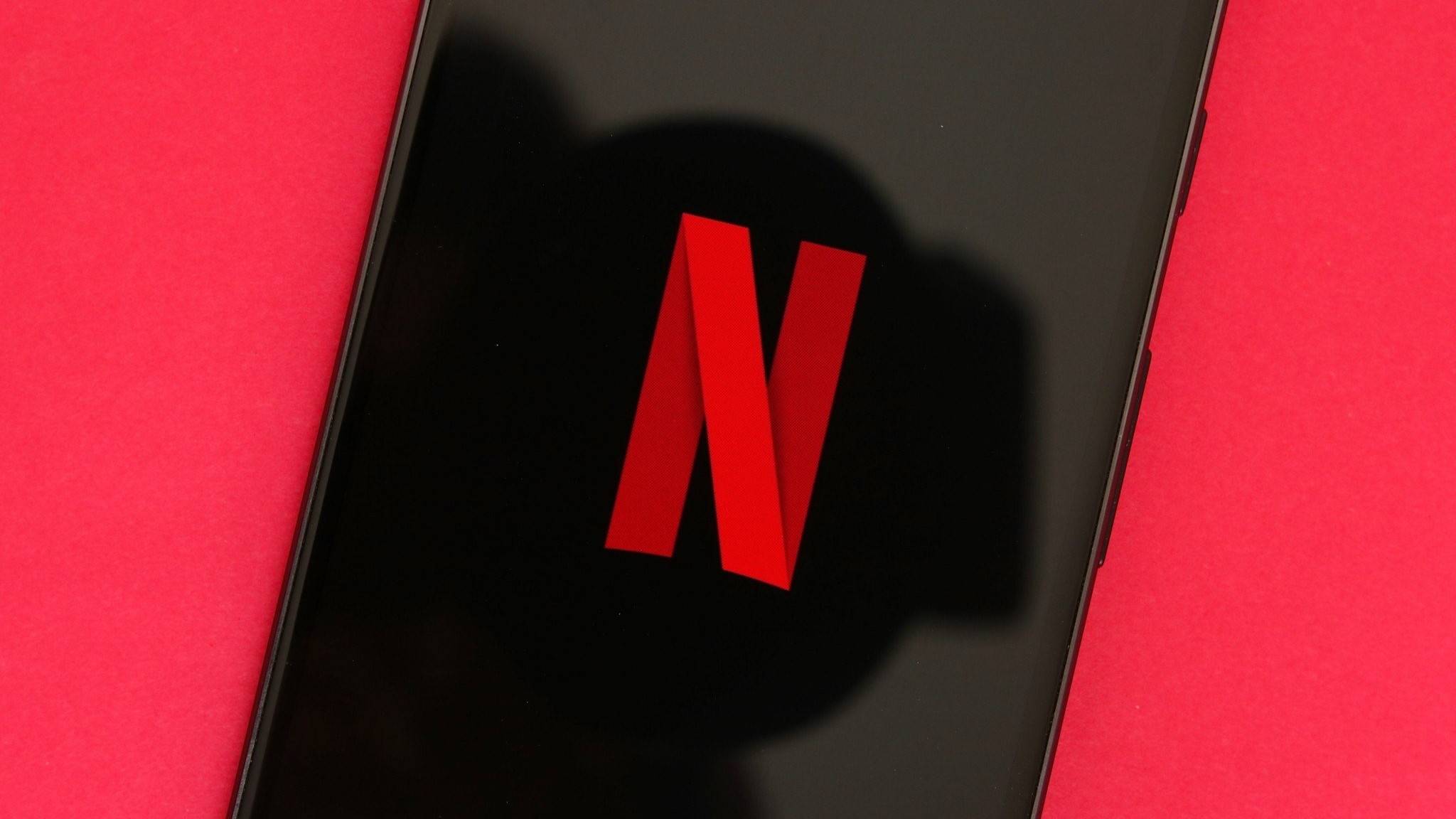The Motorola RAZR isn't set to launch until Thursday, February 6, but the company has already begun shipping pre-orders and luckily for me, I got it a few days early.
The RAZR is Motorola's most iconic smartphone reimagined for 2020, but are the folding display, cool retro tricks and the display on the front enough to justify an astronomical price tag? It's too early to tell, but after 48 hours, here are our first impressions of Motorola's new folding flip phone.
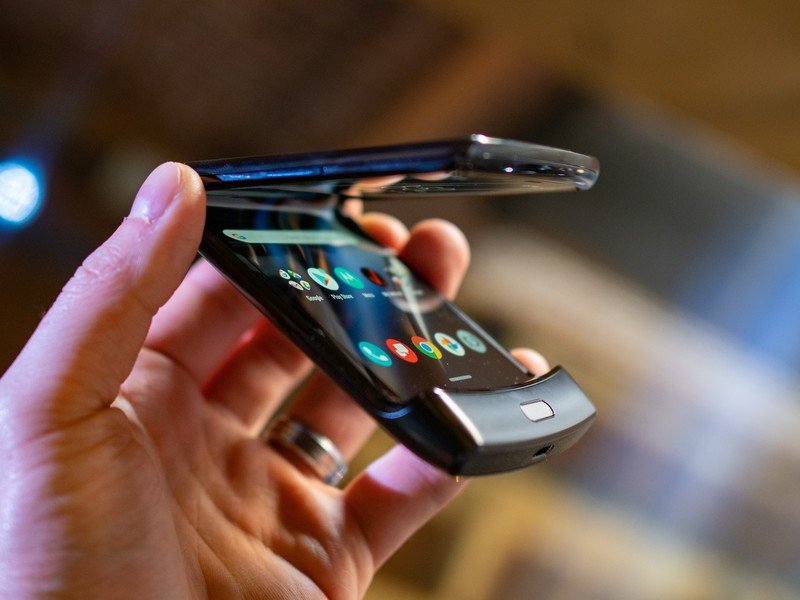
Disclaimer: I purchased this Motorola RAZR directly from Motorola. This is not a review sample from any company and I paid full price ($1,499 + tax) for it. I've been using the Motorola RAZR for 48 hours at the time of posting, with about 24 hours of those on Verizon's LTE network. I'm reserving our full judgment on the features like the camera, battery and performance for the full review which will be out soon.
The best packaging ever on a smartphone
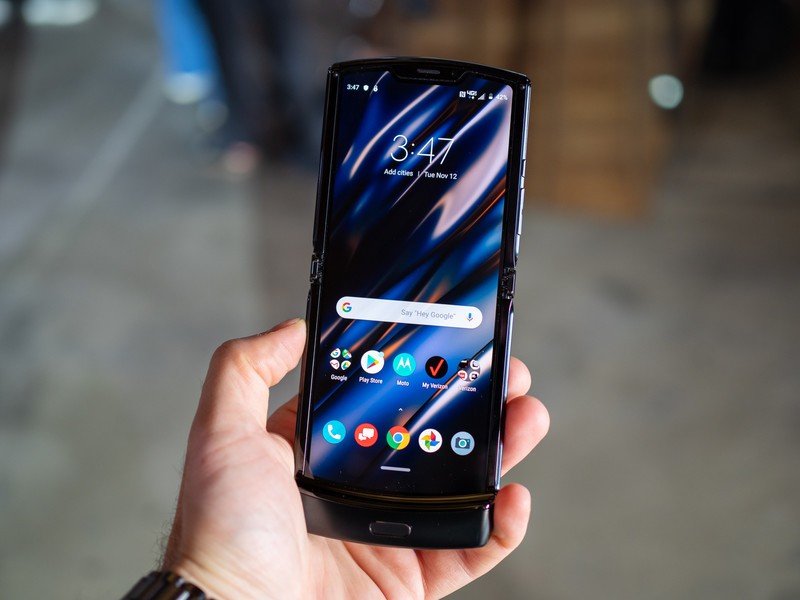
Spending $1,500 on a smartphone is not something for the faint of heart, but the RAZR immediately feels worth it when you start to unbox it. The packaging on most smartphones is boring, pointless and an exercise in displaying the technology rather than enhancing it. The RAZR is the exact opposite; it's the best packaging I've ever experienced on a smartphone.
The Motorola RAZR features the best packaging ever on a smartphone.
Most phone boxes are designed to hide the contents of the box and the phone you've just bought. The RAZR's, on the other hand, is one of the most stylish boxes you'll find. It's designed to stand up, not lay flat like others, and there's a beautiful feeling as you lift up the box to reveal the RAZR. It comes fully unfolded and ready for you to pull out, but you definitely don't want to throw away the rest of the packaging for two reasons.
First, the stand where the RAZR is docked helps amplify the sound. It doesn't make the speaker much better, which is pretty poor, but makes it a little louder. For context, even at full volume and docked, the RAZR is considerably quieter than the Pixel 4 XL, iPhone 11 Pro and other flagships.
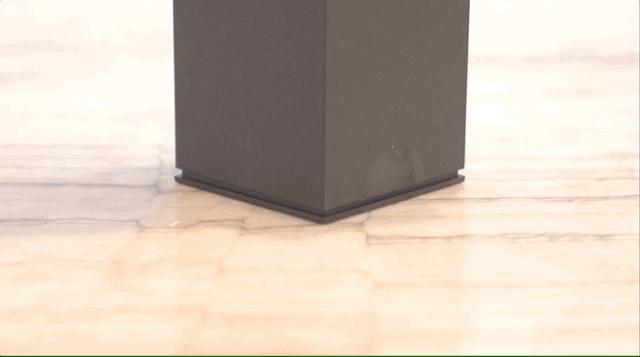
The box features a minimalistic aesthetic that is incredibly appealing and this extends to the usual accessories – 18W TurboPower charging brick, USB-to-USB-C cable, 3.5mm headphone jack adapter, and the USB-C headphones – which are neatly contained in a glasses case. Pull the accessories out, pop your glasses in and you're good to go.
The Motorola RAZR is a fragile phone that needs TLC
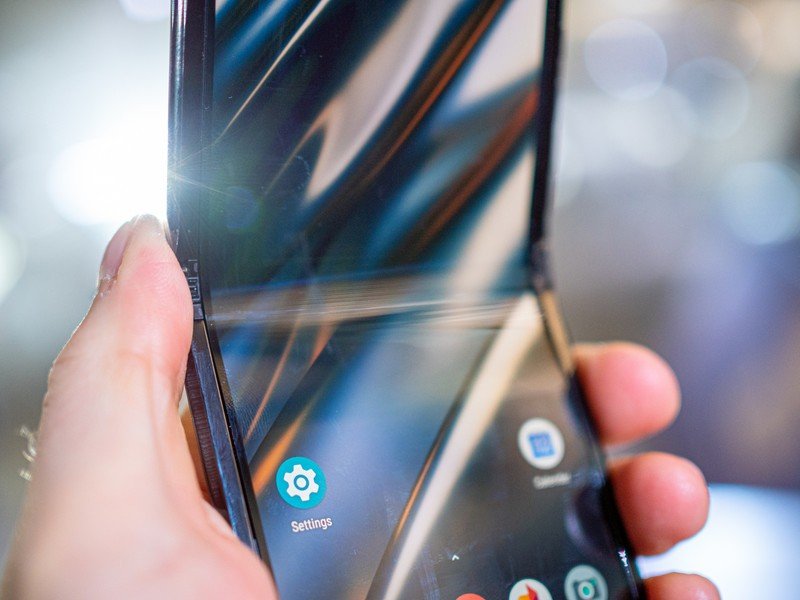
Unfortunately, luxury does not mean bulletproof, and in the case of the RAZR, it's almost the exact opposite: this is a phone that needs a lot of TLC. Like any folding device — including the Samsung Galaxy Fold which I love but has the same fragility concerns — the RAZR isn't waterproof, and the sheer thought of ruining a $1,500 phone by getting it wet has already prevented me from using it like I would any smartphone.
The Motorola RAZR screen feels fragile, and I'm concerned whether it will hold up in long term use.
Yet fragility concerns extend beyond just durability: the screen itself feels more fragile than the Galaxy Fold. Despite Motorola promising that its first foldable phone would be able to withstand the trials and tribulations of regular life, I don't have the same confidence.
The way the RAZR screen flexes and moves as you fold is simply amazing, but to accommodate the movement, it physically shifts along the hinge. As a result, the feedback as you press the lower left or right corners of the screen feels strange, like it could damage the display over the long-term.
Can confirm this is on retail units. This is on mine after 1 day of use. https://t.co/lBXIWtE8fI pic.twitter.com/9XTNG4YBmMCan confirm this is on retail units. This is on mine after 1 day of use. https://t.co/lBXIWtE8fI pic.twitter.com/9XTNG4YBmM— Nirave 尼拉夫 (@nirave) February 2, 2020February 2, 2020
Alongside this, Motorola has already said bumps and lumps on the screen are a normal experience. In the first two days, I haven't had any, but the company issuing an official statement like that doesn't fill me with confidence. Neither does the fact that there is a very audible creak as you fold or unfold the screen, which you can see in this video. Considering how technology ages, this will only get worse and not better with time, which leaves me very concerned about the potential of the RAZR becoming little more than a $1,500 paperweight.
Motorola's camera woes strike again
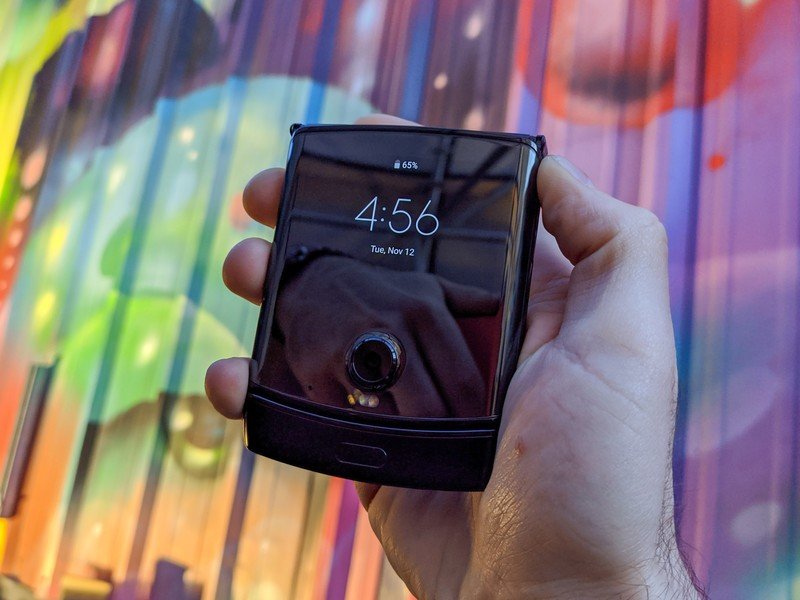
I can hear it now… you said you were going to reserve judgement on the camera, right? Well, yes, we are, but there are some key takeaways around the camera that just couldn't wait. Simply put: don't expect a world-class camera.
There are two key takeaways we've come across, and with a rumored update on the way in just a few days, theoretically, there's still time for Motorola to fix these. The front-facing smaller display makes for a mighty fine camera viewfinder and can take great selfies in good lighting. Unfortunately, in low light, this is almost the exact opposite as images are soft, lacking detail and the autofocus takes absolutely forever.
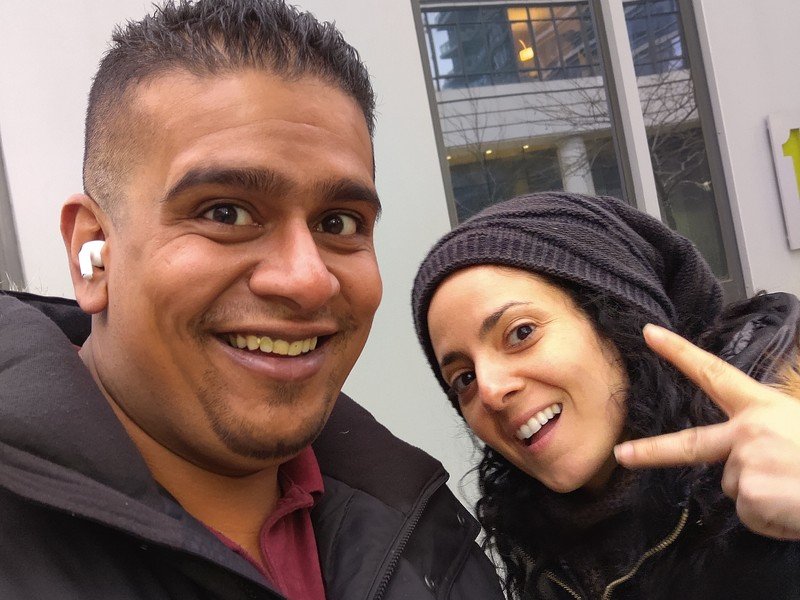
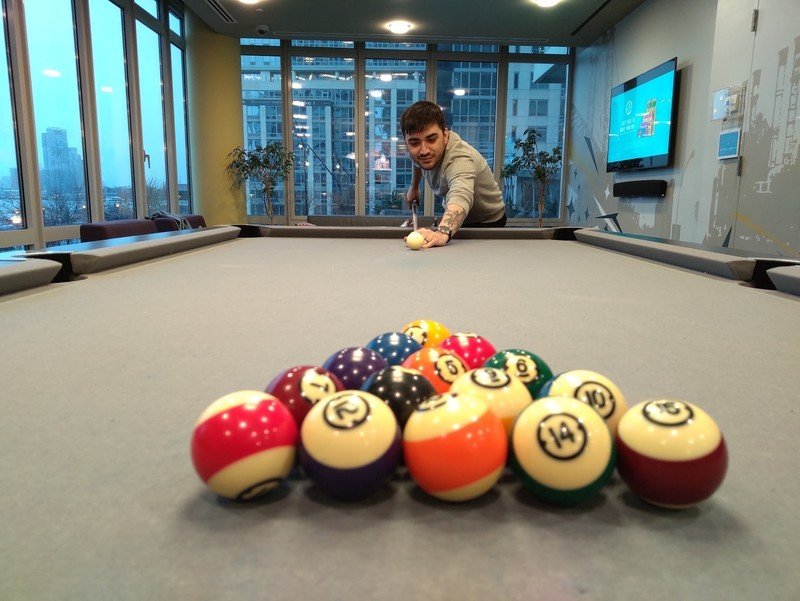
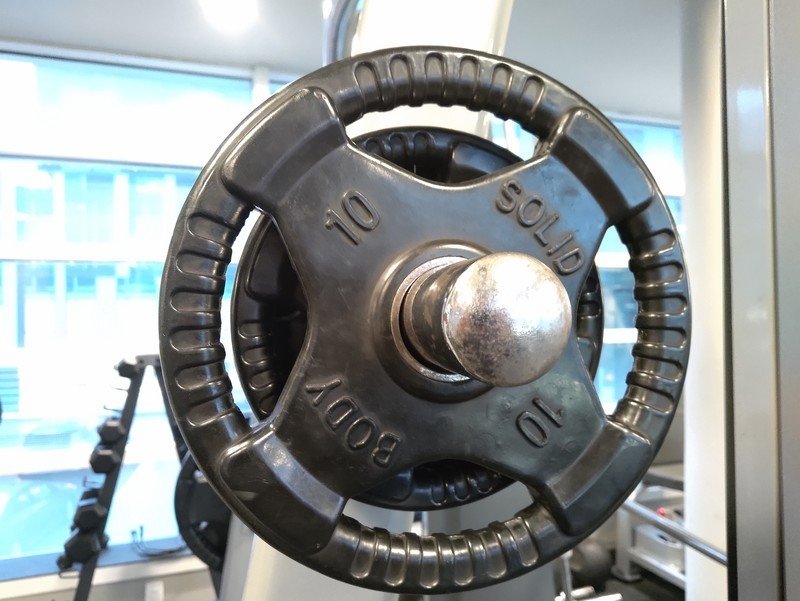
Motorola's camera issues are seemingly due to software, as the phone often takes more than 30 seconds to autofocus and then still outputs a blurry photo. The blurry photo above was taken in low light conditions, with the phone folded and the flash turned on to act as a fill light. It took nearly 45 seconds to take this photo using the volume key camera shutter shortcut, and thinking the blurriness was down to user error, I took another one only for it to turn out exactly the same way.



Like I said before, I'm reserving judgement until it's been a better day and I've had time to properly test the camera, but so far, the low light performance doesn't fill me with confidence. Given Motorola's past troubles with getting the camera software right, this may end up being one of the significant drawbacks to the Motorola RAZR over something like the Samsung Galaxy Z Flip, but only time will tell.
Specs do matter, especially when you pay $1,500
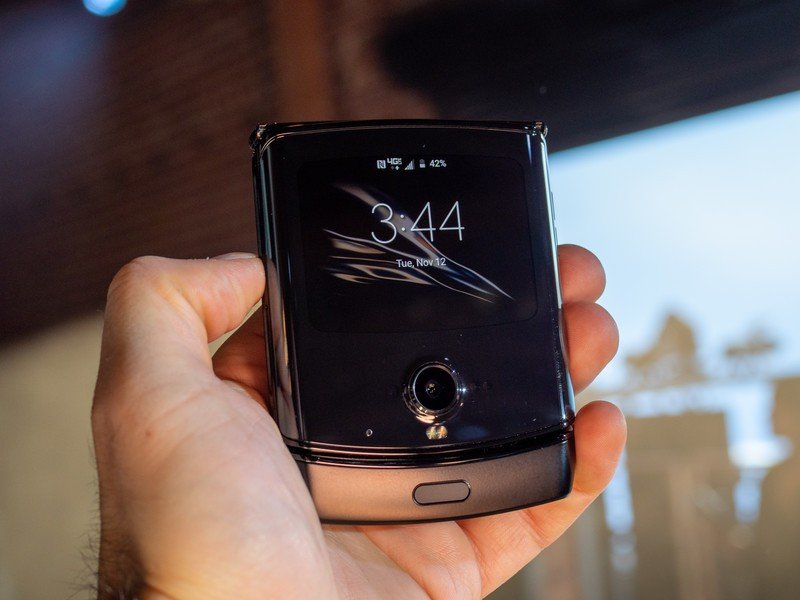
One of the biggest early reactions to the RAZR being unveiled was how Motorola had opted for mid-range specs, despite charging $1,500 for the RAZR. I've often heard that specs don't matter, but for anyone using this in defense of Motorola's choices, my answer is they do matter. In the case of the RAZR, they definitely do matter.
It's too early to know for sure, but the hardware choices are likely to pose a limitation for Motorola and the RAZR.
As a quick recap, the Motorola RAZR specs include a 6.2-inch Foldable P-OLED display, a Snapdragon 710 processor, 6GB of RAM and 128GB of storage. There's a single 16MP camera on the rear, which also acts as the selfie camera when the phone is folded shut, while the actual selfie camera atop the large display is a pretty basic 5MP unit. The battery features a measly 2,510mAh which shows in the usage, while the RAZR currently runs Android 9 Pie, with an upgrade to Android 10 purportedly planned for the near future.
All of this means one thing – despite costing more than most flagship devices, the RAZR has specs worse than the Samsung Galaxy S10e, which costs less than half the price and came out a year ago. For the most part, you won't see many performance issues with day to day usage, but there is noticeable lag when playing intensive games or even trying to rapidly switch between multiple apps.
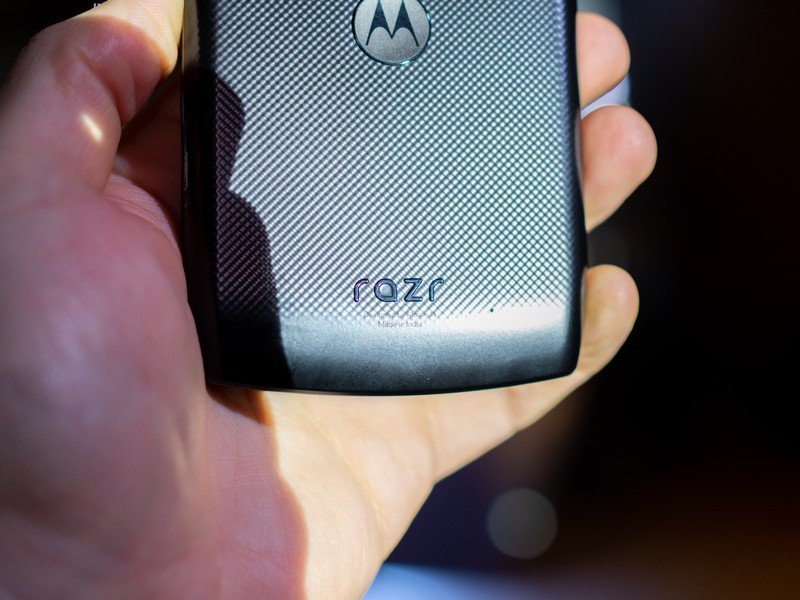
One area of performance issues that is hugely frustrating is around the display size : when you have it set to the default (which is at step 2 out of 4 options) or the more dense option (step 1) there's a lot of noticeable performance glitches, which seem to be resolved when set to step 3 or 4. Of course, this means you can then fit less on the screen and it compromises the experience for me as I like to fit as much onto my phone screen as possible.
The performance glitches and noticeable will most likely be fixed with the planned update for later this week, but the hardware choices are likely to pose a limitation for Motorola and the RAZR, especially as Android 9 doesn't have native support for foldable devices and Motorola's past history with updates leaves lots to the imagination.
Moto Actions and Moto Display were made for foldables
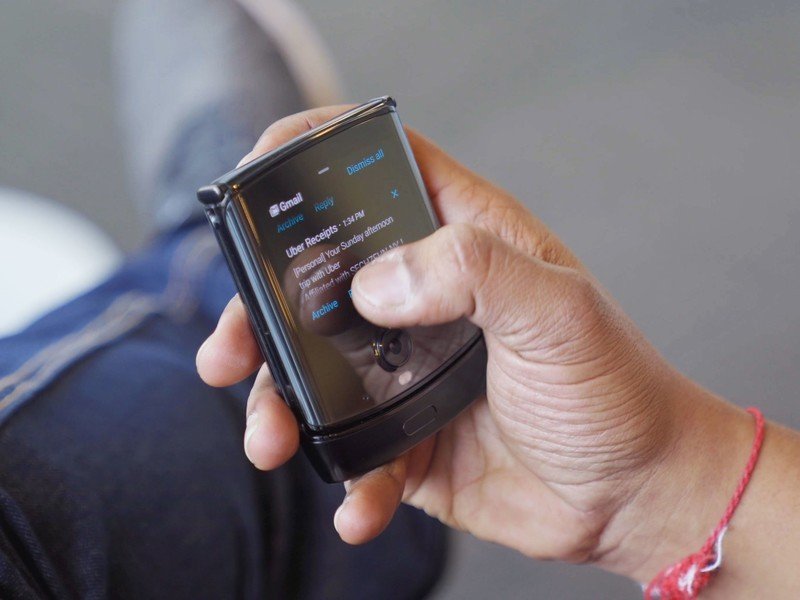
If you've used a Motorola phone before, the Motorola RAZR will feel very familiar as all the usual Moto tricks such as double-twisting to launch the camera, and double chopping to launch the flashlight are present. However, while in the past they've often felt like a gimmick to me, these all feel completely at home on the RAZR, in a glorious way that sets it apart from other phones.
Moto Actions and Moto Display feel like Motorola has been building to the RAZR for years.
Take for example the double-twisting to launch the camera. On most phones, you have the ability to double press one, or press a combination of the physical buttons to launch the camera. This is usually no easier than just pressing the on-screen icon when it's locked. On the RAZR, the double twist Moto Action means it takes a split second to launch the camera and there's no need to unfold it thanks to the front screen. The double chop to launch the flashlight is also really useful as when the phone is folded, the flashlight is right in the palm of your hand making it easy to wield, although it may blind you at first.
More importantly, Motorola's display features from the Moto Display on other phones are also present although they take on the form of the new Peek Display. Designed to make the exterior display useful, these allow you to quickly preview and sort through notifications, and with a swipe up in supporting apps, also reply to notifications using your voice. There's no way to reply with a small on-screen keyboard which is disappointing, and a lot of apps will ask you to unfold the phone to reply or take actions, but nonetheless it's a very useful feature. As Hayato put it, it's like having a smartwatch on your phone, which is actually quite useful.
Hmm gotta admit this Peek Display does seem useful #MotorolaRAZR pic.twitter.com/OpZKyM3oilHmm gotta admit this Peek Display does seem useful #MotorolaRAZR pic.twitter.com/OpZKyM3oil— Nirave 尼拉夫 (@nirave) February 2, 2020February 2, 2020
I've often felt like some of the Moto Actions and Display features are gimmicks, but now I've experienced them on the RAZR, it feels like Motorola has been building to this device for years. Talking about the Galaxy Fold, I've said numerous times that Samsung's past history of multitasking on the Note 10 set it up for success. With the RAZR, it feels like Motorola has also been building to this device and it has an advantage over other manufacturers as it has figured out how to let you interact with your phone in useful ways without needing to touch the display.
Bonus takeaways: Battery, wow factor and first impressions
After 48 hours with the Motorola RAZR, there are a few other things I've begun to notice. It's too early to know how good, or bad, the battery life actually is but in my only day of usage with a full charge, the battery lasted about 11 hours with 3 and a half hours of screen on time. I'm used to much better battery life, and the compromises thanks to the smaller battery size are more than likely too large for me. However, the comments on Twitter to this battery life suggest that some people will be willing to make the sacrifice of battery life for the rest of the RAZR's form factor.
The first 48 hours with the Motorola RAZR have left me with mixed emotions.
This is also where the RAZR really shines – as it's so unique, it's instantly recognizable and it packs the wow factor missing from most phones. There's a satisfying feeling to ending a call by folding the phone shut, and similarly answering a call by flipping it open.
Overall, the first 48 hours with the Motorola RAZR have left me with mixed emotions. On the one hand, I really wanted to love this phone and when I first saw it back in December, I fell in love with it straight away. On the other hand, this is very clearly a first-generation product, the software isn't final (Motorola has confirmed an update is set to come out on Thursday) and there are some compromises thanks to the form factor and the choices that Motorola has made.
Stay tuned for a full review later this week and let us know if you have any questions in the comments below!
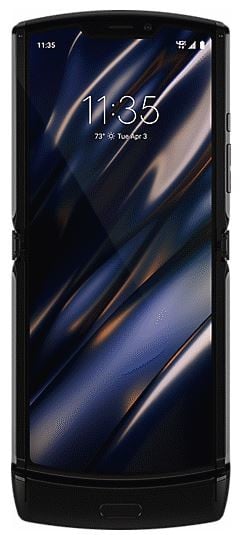
Motorola RAZR
Motorola's RAZR reboot may not be affordable, but it is undoubtedly a very exciting foldable phone. Unlike Samsung's Galaxy Fold and Huawei's Mate X, the Motorola RAZR is a much more compact device and folds into a square. It also offers a clutter-free Android experience, without any heavy skin running on top.
Nirave Gondhia has been writing about the mobile industry for over a decade and began his career selling and fixing phones in the UK. He's used every flagship smartphone over the past five years and carries at least two phones at all times - currently, he's using the iPhone 11 Pro, [Samsung Galaxy Fold and Motorola RAZR. Say hi to him on Twitter at @nirave.

